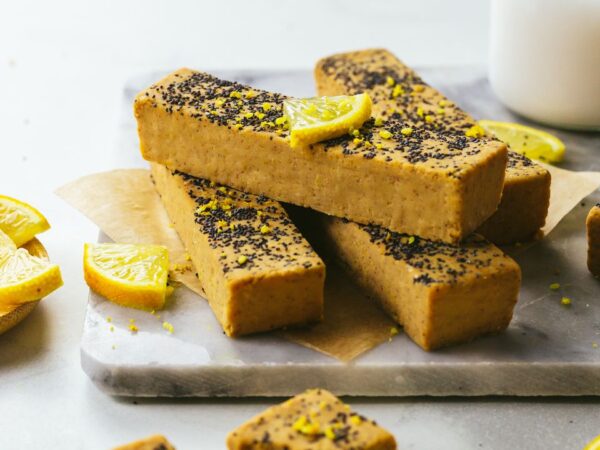Healthy Lemon Protein Bars Recipe (Grain-Free)
These lemon protein bars are a healthy, protein-packed snack that tastes just like a lemon cake bar but delivers an impressive nutritive punch.
Having a protein snack between meals or after a workout helps fuel and sustain your body while keeping hunger at bay.
And nothing is more convenient than nibbling on a protein bar!
Making protein bars at home is very easy and puts you in control of the ingredients, so you can avoid additives and sweeteners in commercial energy bars.
In this recipe, we’ll show you how to make high-protein bars with lemon that are gluten-free, low-sugar, and grain-free. And they can even be fully plant-based if you use maple syrup!
Each healthy lemon bar packs quality protein sources from almond butter, chickpeas, and protein powder (your choice between soy/rice or whey protein powder).
And to get that sweet and bright lemon flavour in the protein bars, you’ll need just a little honey and lemon essence. Easy!
If you want more energy bar ideas for the week ahead, check out these healthy no-sugar flapjacks, matcha granola bars, or healthy passion fruit bars.
Frequently Asked Questions
How many calories are in a lemon bar?
There are 180 calories in 1 lemon protein bar, and each bar weighs about 90 grams / 3.2 oz.
Here’s a quick overview of the nutritional profile of these healthy lemon bars:
-
14 grams of proteins — which cover 25% of RDI, meaning each lemon bar is high-protein
-
over 4 grams of fibre — high-fibre
-
low in saturated fats — less than 1 gram per bar
-
6 grams of sugar — over half the sugar in classic lemon bars
How do you add protein to lemon bars?
To make lemon bars high in protein use healthy protein sources like nut butter, seeds, mashed beans, yoghurt/silken tofu, and protein powder.
If you don’t want to use protein powder, you can still prepare protein lemon bars using high-protein foods like peanut butter, hemp seeds, chickpeas/black beans, greek yoghurt or silken tofu.
Are these lemon bars healthy?
These homemade protein bars with lemon are a healthier alternative to store-bought energy bars.
They’re prepared with rice protein powder and almond butter, protein-rich ingredients that help fuel and build muscle after a workout.
In each lemon bar, a little honey adds sweetness while chickpeas bring in fibres for a steadier energy release.
How long does it take for these protein lemon bars to set?
These protein lemon bars require no baking and are ready to eat straight away.
Once you’ve compacted the lemon protein dough into a tin, leave it to set in the fridge for just 10-15 minutes so it’ll be easier to slice into single-serving protein bars.
Can you make lemon bars without flour?
You don’t need flour to make lemon bars. You can prepare healthy lemon bars without grains — so without wheat flour or oat flour.
If you make protein powder lemon bars, the protein powder itself works as a dry ingredient that replaces flour perfectly.
Also, other healthy ingredients like mashed chickpeas help add bulk to the lemon bar dough without the need for flour.
Can you make lemon protein bars without protein powder?
Yes, you can surely make protein lemon bars without protein powder and use high-protein whole foods instead.
Protein powder is nearly 90% protein, so it helps you pack more proteins in less volume easily.
To add proteins back in, you can replace protein powder in the lemon bars with the same amount of finely ground almonds, hemp seeds, or pumpkin seeds.
Alternatively, use ground oats and then add a few spoonfuls of Greek-style yoghurt (dairy or soy) to help the oats soften.
How do you make protein bars taste of lemon?
Use lemon extract to make lemon-flavoured bars, as it packs all the lemony flavour of the lemon peel without the bitterness.
As an alternative to lemon extract, you can use lemon zest, making sure not to grate the bitter, white pith.
Lemon juice, instead, is too sour and you may have to add extra sugar to the protein bar dough to compensate.
What’s the best protein powder for lemon protein bars?
We prepared these high-protein lemon bars with unflavoured brown rice protein powder.
Using plain protein powder in protein bars helps you control the sugars and avoid artificial additives.
Still, if you prefer flavoured protein powder, we recommend using vanilla flavour so as not to overpower the delicate taste of lemon in the bars.
As for the type of protein powder, rice protein powder and soy protein isolate are the best vegan options or you can opt for whey protein powder.
Ingredients
| Canned Chickpeas (drained weight) | 360 g |
| Protein Powder (Rice/Soy/Whey) | 60 g |
| Almond Butter | 75 g |
| Lemon Essence | 21/2 tsp |
| Honey (or Maple Syrup) | 50 g |
| Poppy Seeds (optional) | 1/2 tsp |
Step 1
Rinse the canned chickpeas a few times under running water, then drain well on a colander.
Add them to a blender with the protein powder, almond butter, lemon essence, and maple syrup/honey.


Step 2
Blitz the ingredients until they come together into a compact dough, scraping the sides of the blender a few times in between pulses.
The dough should be a little sticky but pliable and hold together when pressed.
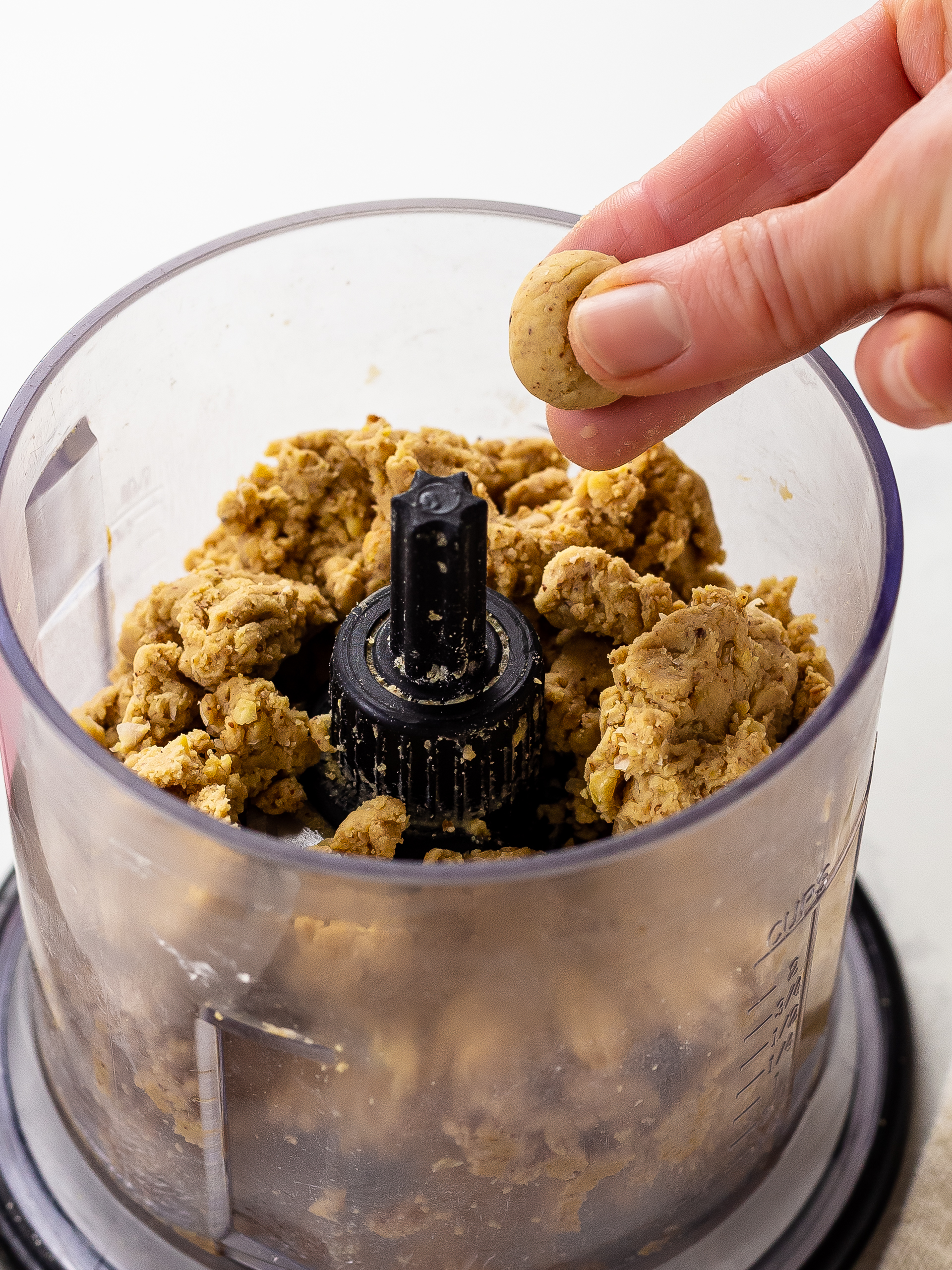

Step 3
Transfer the protein lemon bar mixture into a loaf tin lined with baking paper — a 20 x 10 cm (8 x 4 in) loaf tin will yield 6 bars.
Press the bar dough hard with your hands to compact it and level it with the back of a spoon.
Then, sprinkle the top with poppy seeds, pressing them in with your fingertips.
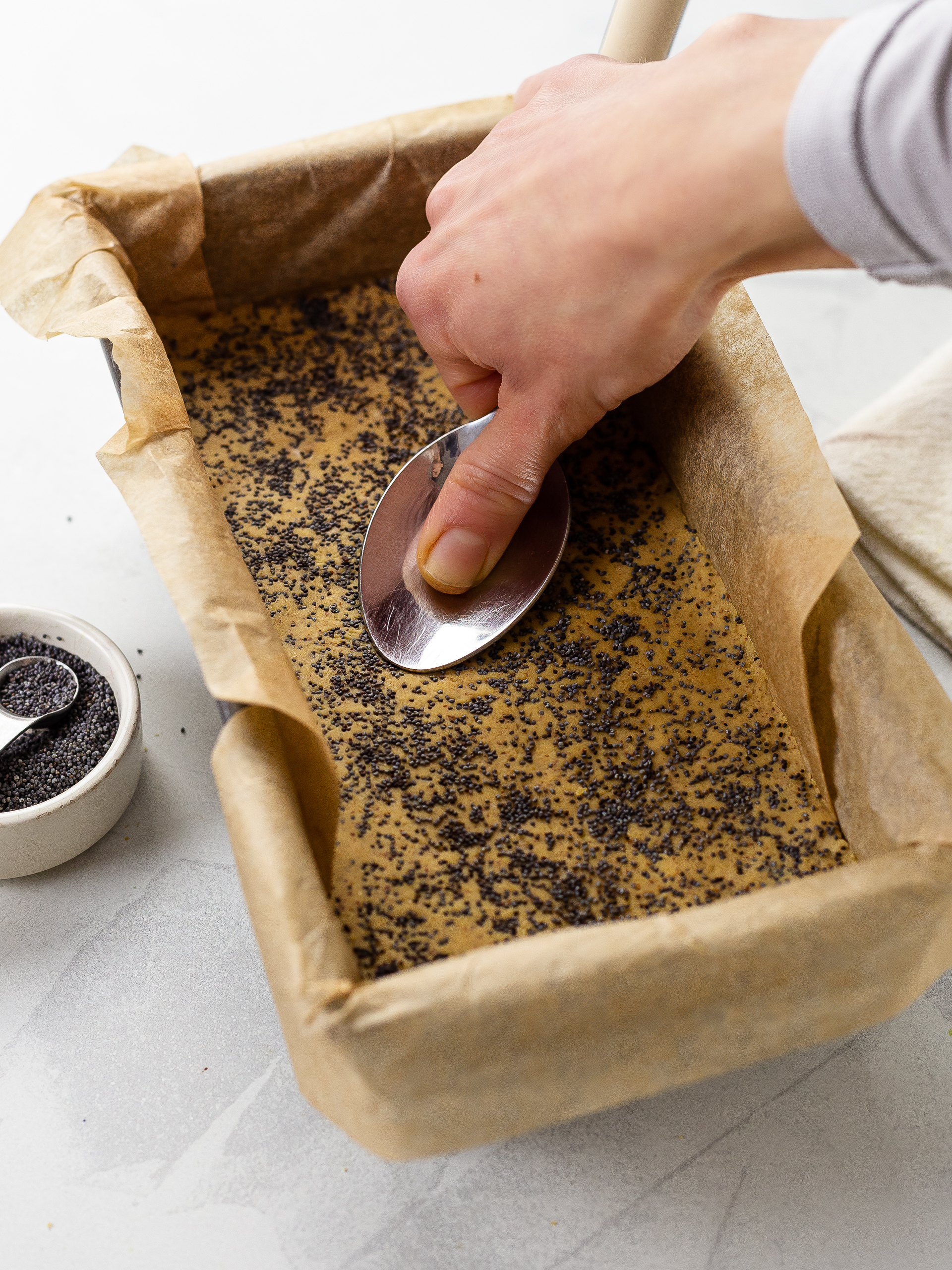

Step 4
Wrap the tin with cling film and place it in the fridge for 10-15 minutes to set.
Finally, slice into single-serving bars — 6 for the default ingredients (1).
Your healthy lemon protein bars are ready!
Enjoy them right away or store them in an air-tight container in the fridge for 4 days or freeze for 3 months (2).
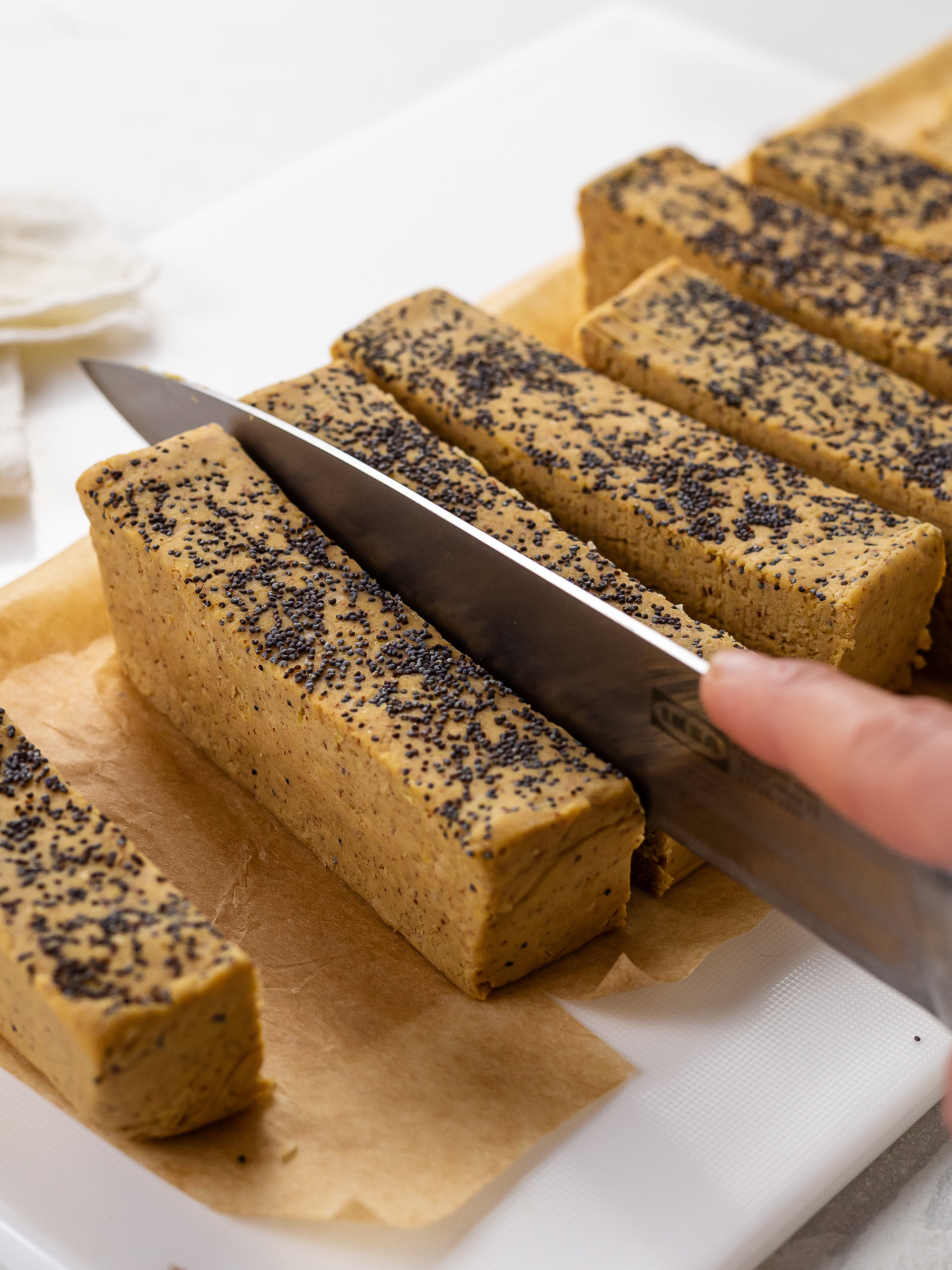

1
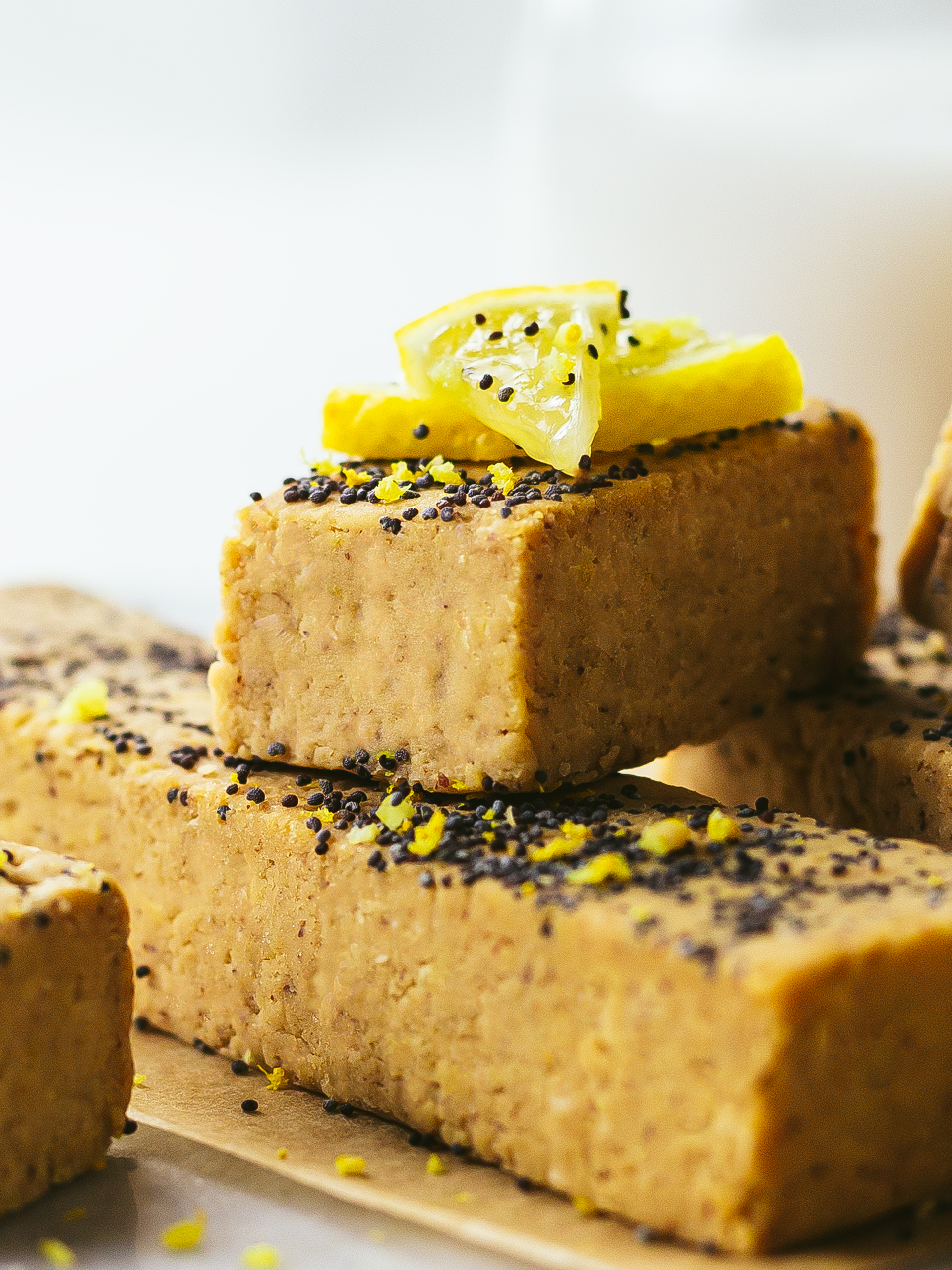

2
Tips
-
Due to the difference in nut butters and protein powders, the lemon bars dough may be a bit more moist or dry than expected. So, if needed, adjust the ingredients, adding more protein powder or a splash of milk to get the right consistency.
-
To make these lemon protein bars sugar-free, you can replace honey/maple syrup with erythritol or stevia and then add a few spoonfuls of milk for moisture.

